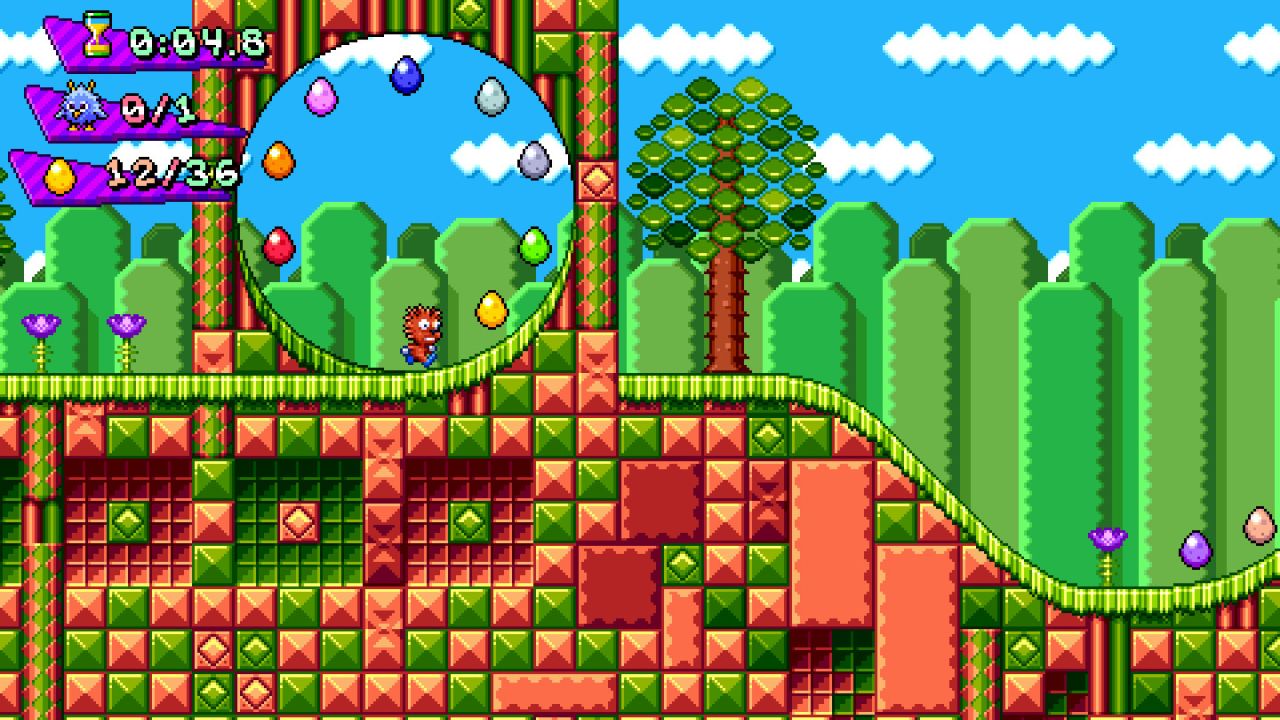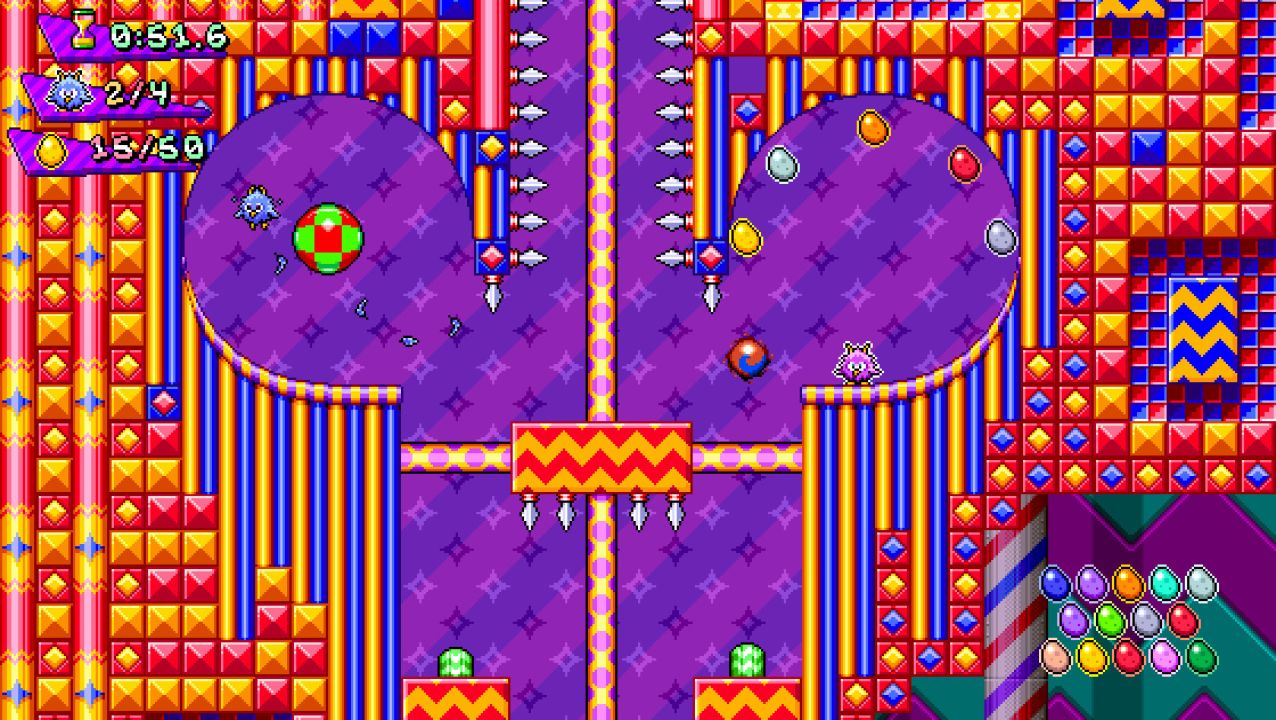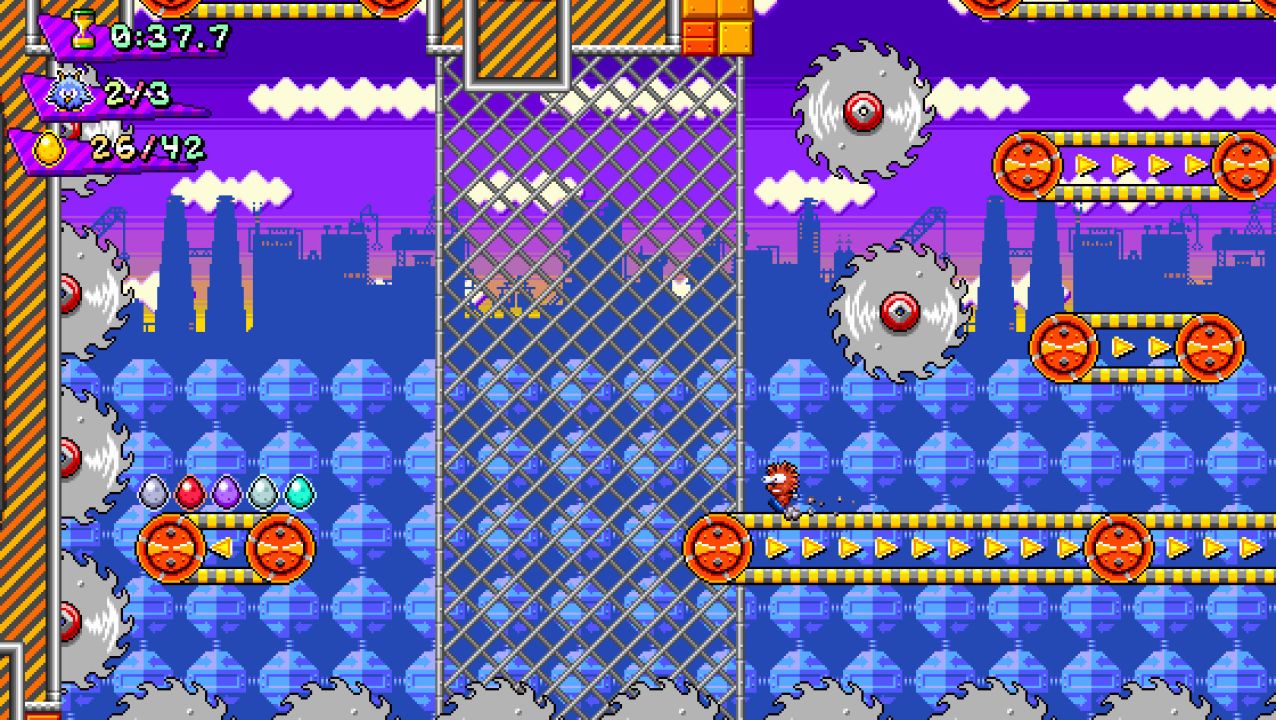Panic Porcupine Review
When you think of some of the biggest gaming franchises, there is a mountain of parody games. Some are generally clever and integrate initiative ideas into the core gameplay. Other times, the whole experience feels like one massive, uncomfortable leg cramp you would rather erase from your mind. Panic Porcupine falls somewhere in the middle—pins and needles all over that you can’t quite shake off.

At first glance, Panic Porcupine appears to be a parody game of the Sega Genesis era of Sonic the Hedgehog with its 2D side-scrolling platforming action, but, at closer inspection, you soon realize it’s a crossbreed with Super Meat Boy, as any minor mishap will lead to instant death. All these factors lead to an initially fun but challenging gameplay cycle, which eventually gets monotonous when you finish the game at roughly the 5–6-hour mark.
The plot is short, snappy and satirical. Mechanical gadgets designed by the evil scientist Dr Proventriculus have kidnapped innocent birds called Chickabirds. Due to a certain blue hedgehog snagging a movie deal, Panic will now have to save his feathered friends instead. The minute or so worth of written dialogue between the characters is amusing enough, with one or two puns and references shoved in, but ultimately, you won’t be playing this game for the engaging plot.
Panic Porcupine feels like a self-induced fever dream channelling Sonic and Knuckles’ classic Carnival Night Zone, where the most challenging aspect of the gameplay is fighting against the environmental obstacles to survive. The aim of each level is straightforward: collect all the Chickabirds scattered across the stage. The stumbling block in your bird poaching activities will come from environmental hazards such as spikes, chainsaws and even lava floors. To overcome these threats, you must utilize objects like springs, moving ledges and cannons with nearly perfect frame timing; otherwise, you will instantly die.
In the first few levels, there will only be a handful of deathtraps to avoid, and it should not take any longer than a minute or so to complete the level. However, by the end of the fourth level, there is a dramatic change, and there will be dozens, if not hundreds, of potential hazards that could lead to you meeting your maker. There are also no second chances in Panic Porcupine. If you endure any form of hit, you will die immediately, losing all your progress and starting again at the beginning of that level, which obviously makes things a lot more challenging. On two occasions, I even found myself putting down the game briefly so I could keep the rage levels at a minimum.

The famous spin dash is absent, creating a gameplay style reminiscent of the original Sonic the Hedgehog game back on the Sega Genesis. However, there are ways to build up speed and start moving fast across the level. To achieve this, the ragamuffin hero can build momentum by running and then rolling into a ball. This technique is highly beneficial when getting past slopes or steep hills, as you will need a lot of speed behind you.
Execution is the aim of each level, not speed. Nearly all the stages will require you to know what is ahead to counteract the impending danger rather than continuously travelling fast. The obstructions will not always be self-explanatory, and this creates a fun, albeit sometimes frustrating loop where you constantly repeat a stage until you figure out what to do and execute it flawlessly. In the same vein as Super Meat Boy, there are no enemies in the stages, and the title chooses to primarily focus on environmental hazards. There are occasional boss battles when you go toe-to-toe with Dr Proventriculus, but they’re incredibly tame and don’t involve directly attacking the Doctor but rather hitting robotic eggs while trying to dodge hazards simultaneously.
In total, there are six worlds, with each one having ten levels. Each world takes inspiration from iconic Sonic locations. For instance, the first world, Hills That Are Green, plays on the classic Green Hill Zone with its scenery and square block flooring, whereas another world called Winter Mountain is a clear homage to Ice Cap Zone. The soundtrack also suits the aesthetics and old-school vibe the game is trying to achieve with its synth-styled music. One point worth mentioning is that the downtrodden protagonist has a strange and crazy-looking appearance. This is presumably the intended effect, as the character is supposed to be in a state of “panic” from being pushed into the job of saving everyone, but he looks more like he’s suffering from drug withdrawal symptoms.
It’s hard not to make comparisons to the blue daredevil’s stages, which are brimming with robots, item boxes, and chaos emeralds. There are eggs to collect, but it’s merely for collectable purposes, contributing to this empty feeling on all levels. After playing the game for one or two hours, you’ve experienced everything; there will just be different variations of hazards you’ve already seen, which will windle down the enjoyment, as you don’t feel like you’re doing anything special after a certain point.

The points mentioned above could be deal breakers for some, but the camera movements are what spoiled the experience for me. With the number of lethal-death traps on each level, you will find yourself halting your actions very quickly so you don’t fall into a hazard. However, stopping too fast creates a jilting sensation, which is really off-putting, especially if it occurs too often in a small space. This leads to the side-scrolling action not blending seamlessly with what transpires on the screen, which takes you away from the immersion.
I have mixed feelings about Panic Porcupine. On the one hand, it offers devilish challenges with themes and stages that almost feel like a familiar place you have visited before, and when you search for a parody game, these are qualities you look for. But it felt like it relied too heavily on just one gimmick, and although overcoming hazards is initially interesting, it eventually gets dull after a while, as the levels don’t really have much else going for it. This is not helped by the messy camera movements either, as it discourages you from wanting to repeat and master the levels, which is supposed to be one of the game’s main highlights.
